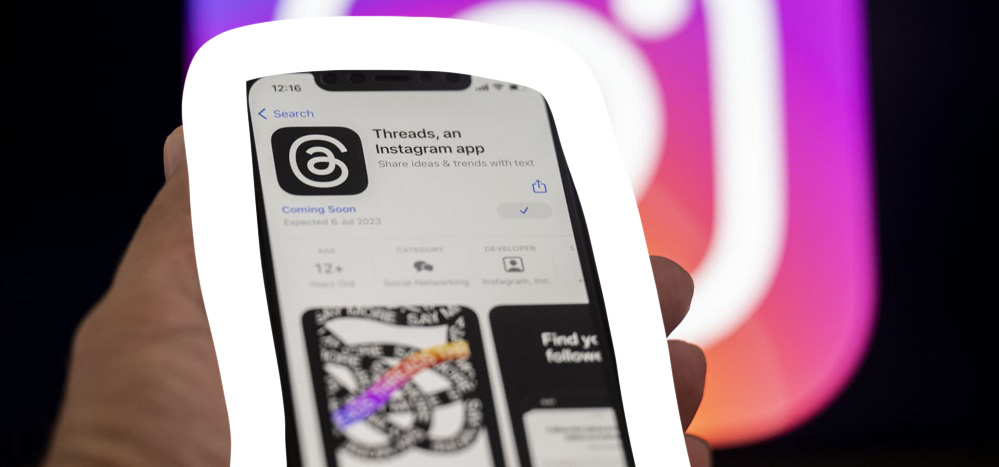Threads, the new social network from Meta, gained 30 million subscribers in just 16 hours after its launch. The application, created as a response to Twitter, quickly became the leader among free apps on the Apple App Store. However, despite its rapid popularity, Threads has several limitations, including the lack of direct messaging and hashtag functionality.
The Response to Twitter’s Challenges
Threads was introduced by Meta as a response to the challenges faced by Twitter, including user and advertiser attrition after billionaire Elon Musk acquired the social media platform. On Saturday, Twitter began limiting the number of posts users could read per day, further disappointing its user base. Twitter stated that it had to take such measures to detect and eliminate bots and other malicious users that were harming the platform.
In recent times, several alternatives to Twitter have gained popularity, including decentralized messaging apps like Mastodon and Bluesky, which is supported by Twitter co-founder Jack Dorsey. However, none of these platforms have been able to match Twitter’s popularity and user base.

Threads may have an easier time attracting users as it is built upon Instagram and is automatically linked to a user’s Instagram account. Initially, users could only access the service through Instagram’s app. However, since Thursday, the Threads app has been available for free download from the Apple App Store.
Using Threads
To use Threads, an Instagram account is required. Once a user downloads the application, they are prompted to log in using their Instagram account. Threads automatically transfers the user’s Instagram username, but they can still customize their profile within the Threads app.
Threads allows users to automatically follow the same accounts they follow on Instagram or select specific accounts to follow, eliminating the need to manually search for friends and followers. Meta promotes Threads as a “text-based messaging app for Instagram.” In many ways, Threads resembles Twitter.
Users primarily publish text-based messages called “threads”, limited to 500 characters each. Threads are designed with tools to promote positive and productive conversations. Users can control who can mention or reply to their messages. By using the “@” symbol before a username, users can restrict replies to their messages to only their followers or people mentioned in the message. The hidden words feature can be used to filter replies. Photos or videos can also be included in threads. All accounts blocked on Instagram are automatically blocked on Threads. Meta maintains strict security standards across all its products.
Threads are displayed in a scrollable feed where users can like, reply, repost, or quote other users’ messages.
Limitations
While Threads shares similarities with its competitors, it lacks some important features.
The most noticeable omission is direct messaging. One-on-one messaging is a distinctive feature of almost all major social networks, including Twitter, Instagram, and Facebook. Threads did not launch with direct messaging capabilities, which could pose a challenge for journalists who often receive messages from potential sources or brands that offer customer support through direct messaging on social media platforms.
In the feed, users see messages from all users rather than just those they follow. It can be difficult to find content from specific users or brands that a user follows, and there is currently no option to customize the feed’s display order.
Similar to Instagram, Threads does not display content chronologically. The content is algorithmically ranked and presented to users regardless of the time it was published. Currently, users cannot customize the feed’s presentation.
Threads also does not currently feature paid advertising. However, many brands have already joined the platform. Adam Mosseri, the head of Instagram, who oversees the new app, mentioned that advertising would be a “champagne problem,” a luxury problem if Threads scales successfully.
Another missing feature is the ability to include hashtags in messages. Hashtags are a primary feature of Twitter, making it easier for users to find messages related to a specific topic and discover trending content in one place. Similarly, Threads lacks a search feature that allows users to find specific texts or phrases.
Additionally, Threads does not have a full-fledged desktop website, limiting access to the service to iOS or Android apps. On a desktop, users can only view already written messages through links.
Furthermore, there is a significant drawback in that Threads is linked to Instagram. Currently, according to Meta, there is no option to delete a Threads account without also deleting the associated Instagram account.
Overall, Threads from Meta has demonstrated impressive initial growth. However, despite its rapid rise and popularity, the app has some limitations that could restrict its further market capture. Nonetheless, considering Meta’s investments in security and community management, Threads has the potential to become a significant player in the social media market.

